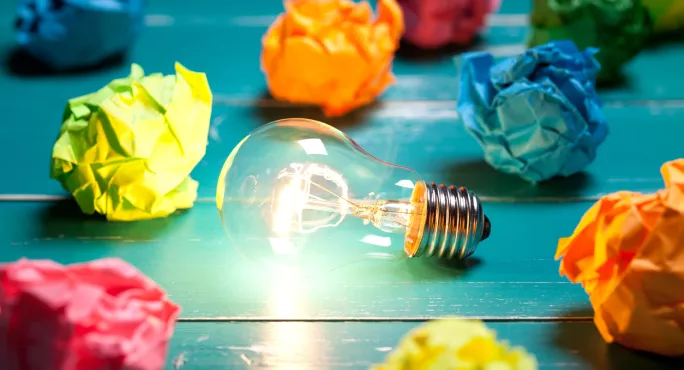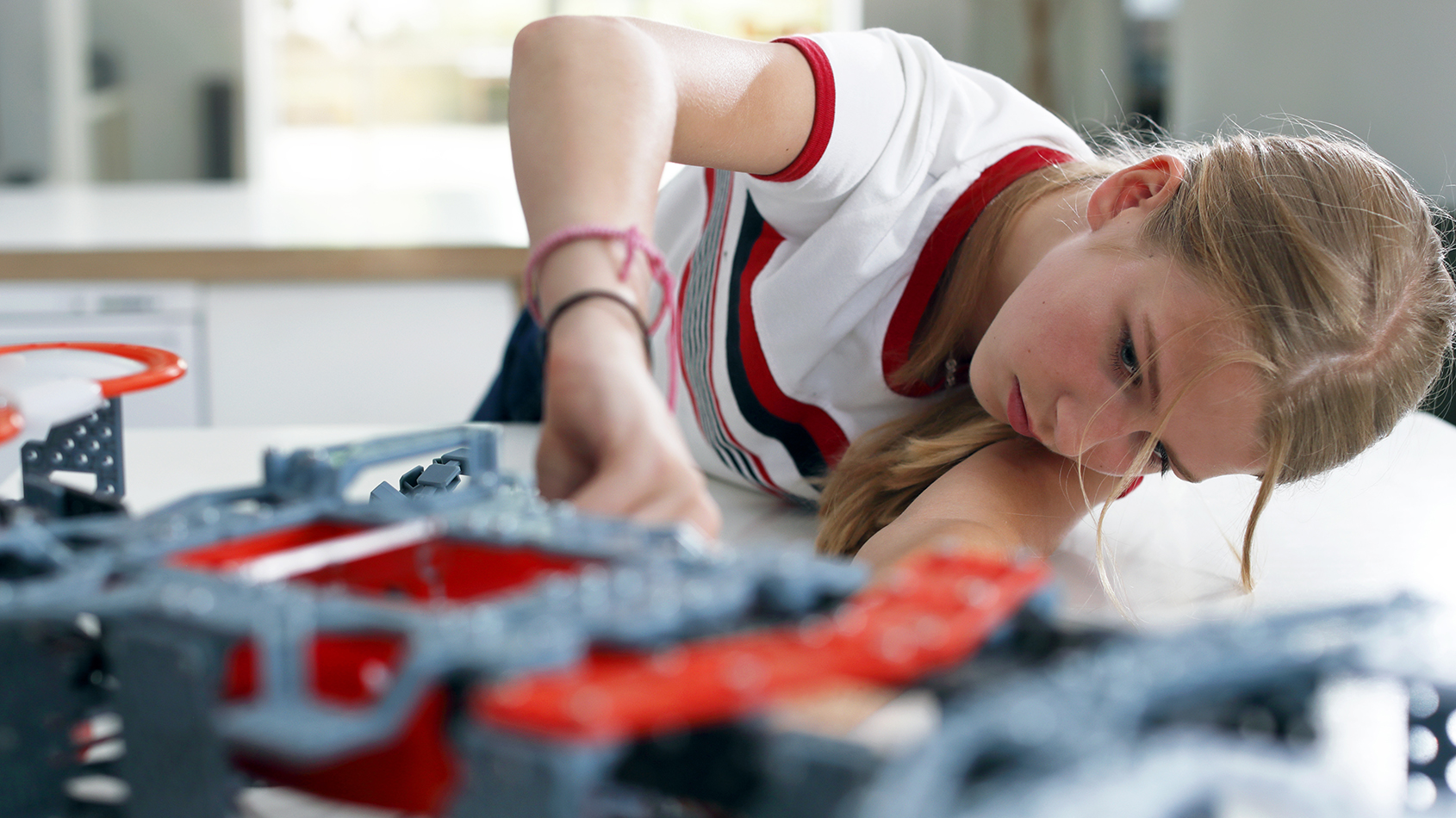How to help young inventors find their creative spark

Trampolines. Braille. Christmas lights. Earmuffs. Every day we use great inventions dreamt up by young people. And in the 21st century, young inventors continue to bring new inventions into our lives.
Aged 8, Mark Leschinsky watched the Ebola crisis unfolding. He was shocked to learn that around 900 healthcare workers had contracted Ebola, despite wearing protective clothing. He invented a self-disinfecting Hazmat suit to keep workers safe while treating patients. Leschinsky now has a patent for his ingenious design.
Riya Karumanchi was 14 when she met a visually impaired woman who used a white cane to help her get around. Karumanchi assumed the cane came loaded with technology to help her sense objects above ground level, or slippery surfaces, and was astonished that it was simply a white cane.
“My initial thought,” she says, “was how is nobody working on this?” She engineered SmartCane, a device that uses GPS navigation, patterned vibration, audio and a communication button in case of emergencies.
Fionn Ferreira was a science- and water sports-obsessed teen. When he discovered the harmful impact of microplastic pollution on water, his passions connected. Aged 19, he invented a magnetic liquid called ferrofluid. When added to water, it sticks to microplastics, allowing more than 85 per cent of harmful microplastics to be removed from the water.
Young inventors like Ferreira, Karumanchi and Leschinsky are transforming our world. But without recognition and protection for their intellectual property, young people risk having their good ideas fizzle out.
How can teachers foster a spirit of invention in young people?
Most of us know names like Nikola Tesla, Thomas Edison or Leonardo da Vinci. And in classrooms around the world sit the inventors of the future, who need to see that their ideas have value and deserve to be nurtured. When we support young people to start inventing and cultivate the skills they need to keep going, we usher in a fresh generation of talent to solve new challenges.
So how can teachers support the young inventors in their classrooms? Three experts committed to igniting young inventors’ imaginations gave the following advice.
Connect with real challenges
“Teachers can support young people to unleash their inventive potential by delivering lessons that connect with the issues which inspire them,” says Maddy Kavanagh, Amazon Longitude Explorer Prize programme manager at Nesta Challenges.
“This can include climate change, living healthier lives, looking after an ageing population, clean transport or staying better connected. Incorporating free innovation competitions like the Amazon Longitude Explorer Prize into lessons helps teachers do just that.”
Encourage students to embrace failure
Invention isn’t as simple as having one bright idea. As Edison is said to have joked, “I didn’t fail - I just found 10,000 ways that don’t work.” The courage to try, fail and keep going is essential to invention.
“Allow students to work on projects driven by their own interests to not only unleash their creative potential, but also help them stay motivated when things inevitably get challenging,” says Heather Picov, CEO of Apps for Good.
“Ensure there is ample support if something doesn’t work out, but space to adapt and try again, and employ real-world industry practice to show that failing and trying again is part of the problem-solving process.”
Boost students’ soft skills as well as ‘hard’ knowledge
“For over 15 years, we have helped young people to start their own businesses while at school or college, and have seen first-hand how a practical, enterprise education can change a young person’s life,” says Bill Muirhead, managing director of the Peter Jones Foundation.
“We champion enterprise skills such as resilience, leadership, communication and financial literacy, and believe that being given the responsibility and freedom to set up a business and ‘learn by doing’ is the most effective way for a young person to develop these lifelong capabilities.”

How can young inventors protect their inventions?
Inventions need protection. Intellectual property rights allow young inventors to get recognised as the creator of their idea or product, providing not just ownership but also an opportunity to capitalise on it.
Getting a patent can stop people from stealing the work and bring it into the public protected, so like-minded inventors can build upon it.
Too often, intellectual property is either left out of lessons or the focus is on how students can stay out of trouble; for example, by avoiding infringing copyright rules around film or music.
Young people need to learn about intellectual property as a tool to protect their creations, not just a way of staying out of trouble.
Here are some key definitions to cover in lessons to help students navigate the world of intellectual property.
What is intellectual property?
Whether you use a paintbrush or a blowtorch to bring your idea to life, intellectual property is anything that you “create using your mind”, says a spokesperson for the Intellectual Property Office (IPO). “For example, a story, an invention or an artistic work.”
Who needs intellectual property protection?
You don’t need intellectual property protection for every doodle or tune that you come up with. A good rule of thumb is that intellectual property protection is essential when you want to stop somebody from stealing or copying it.
According to the IPO, intellectual property protection helps you to stop people stealing or copying:
- Your inventions.
- Things you write, make or produce.
- The names of your products or brands.
- The design or look of your products.
What kinds of intellectual property protection are there?
Many of us have heard of copyright, patents, designs and trademarks. These are different types of intellectual property protection. You get some types of protection automatically, others you have to apply for.
Who gets to own intellectual property?
You own intellectual property if you:
- Created it (and it meets the requirements for copyright, a patent or a design).
- Bought intellectual property rights from the creator or a previous owner.
- Have a brand that could be a trademark; for example, a well-known product name.
Intellectual property can:
- Have more than one owner.
- Belong to people or businesses.
- Be sold or transferred.
If you create your own work, like a film, play or recorded sound, you have automatic copyright protection. If you design something, like a product or piece of packaging, you need to apply for registered design status. And if you invent something - like Ferreira, Karumanchi and Leschinsky all did - you can apply for a patent to recognise you as the inventor of that product.
With the knowledge, skills and confidence they need, young people can transform the world. And when the creative spark becomes a flame, everybody can bask in the glow of life-enhancing inventions
Even the greatest inventions start from humble beginnings. So why not start close to home? The Intellectual Property Office’s Cracking Ideas competition helps young people to see the potential in everyday objects and activities. Students aged 4-11 can enter; all they need to do is reimagine an everyday object to help get boring jobs done quicker and better.
For more information, visit: Cracking Ideas
